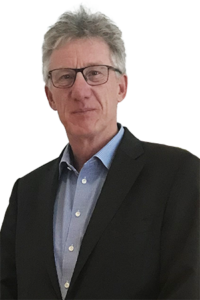It’s a blue ocean affordable, sustainable technology that uses a unique packaging container to deliver fresh milk to the world consumers, Jack Castelein, Partner at Dutch-based MilkWays tells Ben Daniel, editor of Packaging MEA

How do you feed a growing population of 10 billion? Dairy – is the obvious answer.
It’s nutritious, it deliv ers needed proteins that a human body can easily synthesize, it’s available freely and is quite cheap, says, Jack Castelein, partner at MilkWays.
But is it viable to produce dairy in all geographical locations or can we use the services of countries well able to produce dairy food and feed for dairy cows? “It takes at least 1,000 litres of water to produce a litre of milk and 25% of the world’s dairy production is under threat due to water depletion. This is making the dairy industry in countries like the Middle East, India and Africa less sustainable. However countries like e.g. Australia, Ireland, having a good climate, sufficient water and feed that is close to the cows, producing Dairy in those countries is more sustain- able and cheaper explains Castelein.
Innovative alternative
In order to supply fresh milk to countries with unfavorable geography and climate but with a high demand for dairy products, MilkWays uses its dairy and maritime expertise in shipping fresh milk with a shelf life of 40 days, to all these locations.
How is it done? If you give raw milk a pasteurization treatment and keep it in insulated storage under aseptic condition with a temperature of 0.5 C the milk will remain fresh much longer.
MilkWays has a logistical solution where it packs it milk in a sterile, aseptic environment and ships it across the ocean with a maximum sailing time of 10 to 15 days. At the originating country, the milk is cooled to a temperature of half a degree, pasteurized and brought onboard a ship in containers. These are special containers, which are insulated and carry the milk silos. The box has a temperature of half a degree and the silos are filled to the levels of 250,000 litres of milk after which a blanket of nitrogen is put on the top of it. During sailing, the milk needs to be stable; hence MilkWays has invented a system to keep the milk stationery.
“The milk arrives in countries like the Mid dle East and India exactly in the same condition as it left, whether from the microbiological point of view or taste or cleanliness. At the destination country, a reception terminal pumps the milk out to these terminals within a day. This terminal is also maintained in an aseptic condition and with half a degree temperature and this milk can be released to the factory step by step for processing”, explains Castelein.
Packaging Innovation
The unique thing about the MilkWays packaging is the way; the insulated boxes are built where the milk silos are kept. These silos contain at least 250,000 litres of milk each, which can go up to 2.5 million litres. “I think this is unique as currently, the largest pack of milk is 25kgs, be it in milk powder or fresh milk but not in a unique size like this. This form of packaging has never been used before,” stated Castelein.
Not just the packaging, the logistic technology too is sustainable. “The CO2 footprint of shipping liquid milk is much lower than the footprint of powdered milk, (evaporating, shipping and recombining milk.) Secondly, the milk the cow delivers in developing countries is half of what is delivered by cows in Australia or Ireland. And thirdly, the water depleted areas need to import feed for the cows and this also adds to the CO2. All this reduces the CO2 by at least 40% to50%.
The technology is tested and has become avail- able to the market since January 2019. Though it started as a journey into the blue ocean – going where no one has, MilkWays is expected to make their first line operational in 2021.



